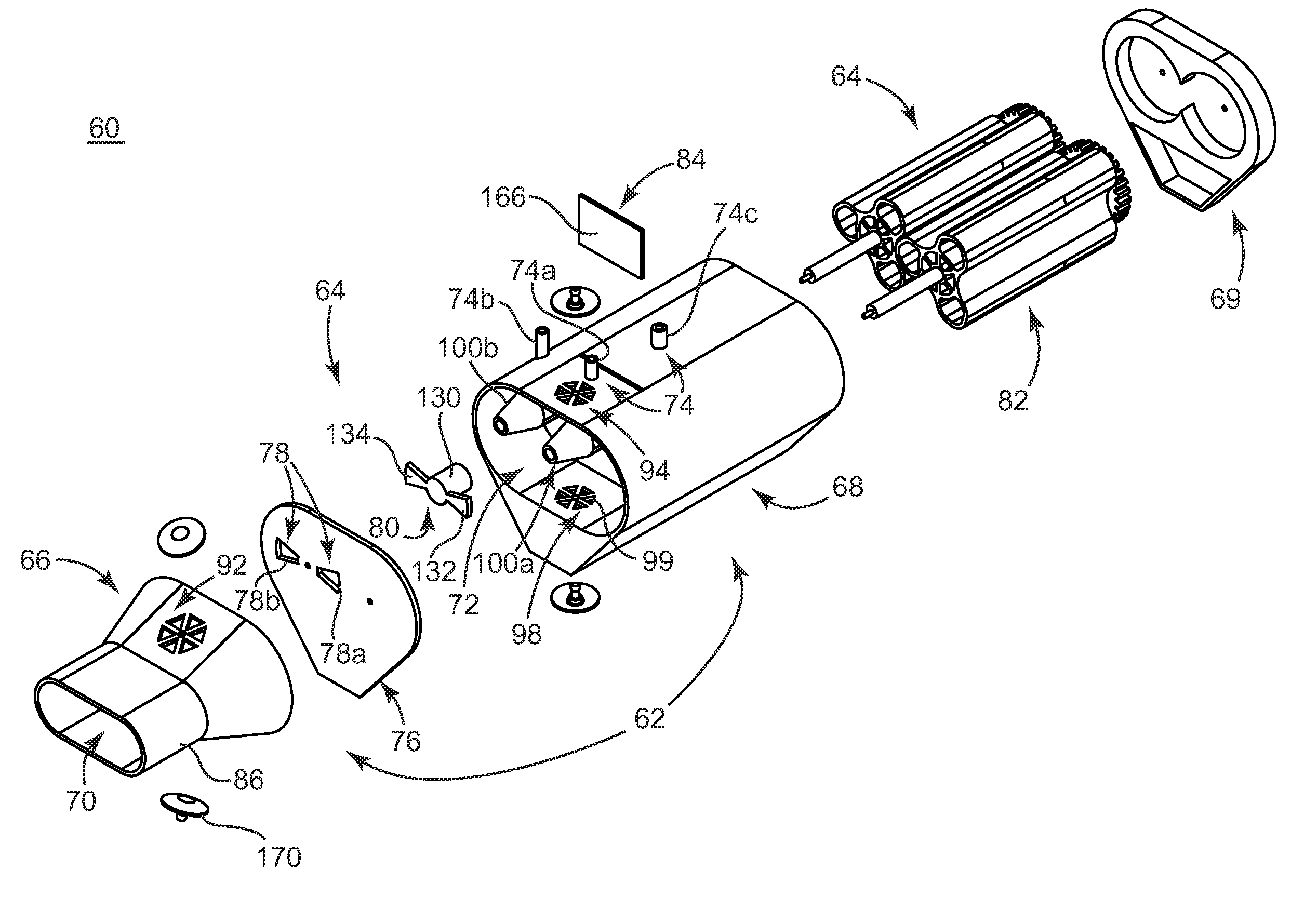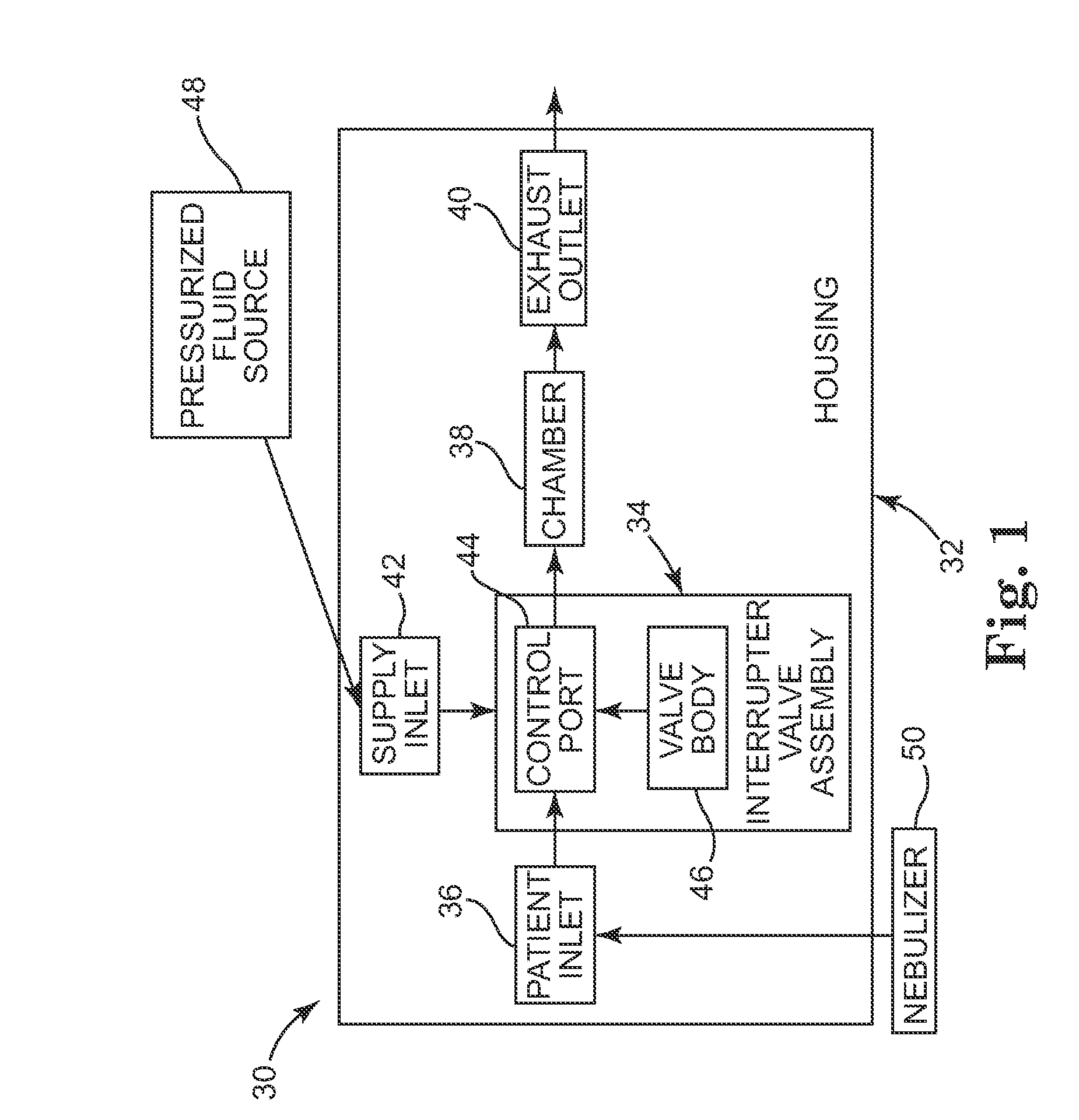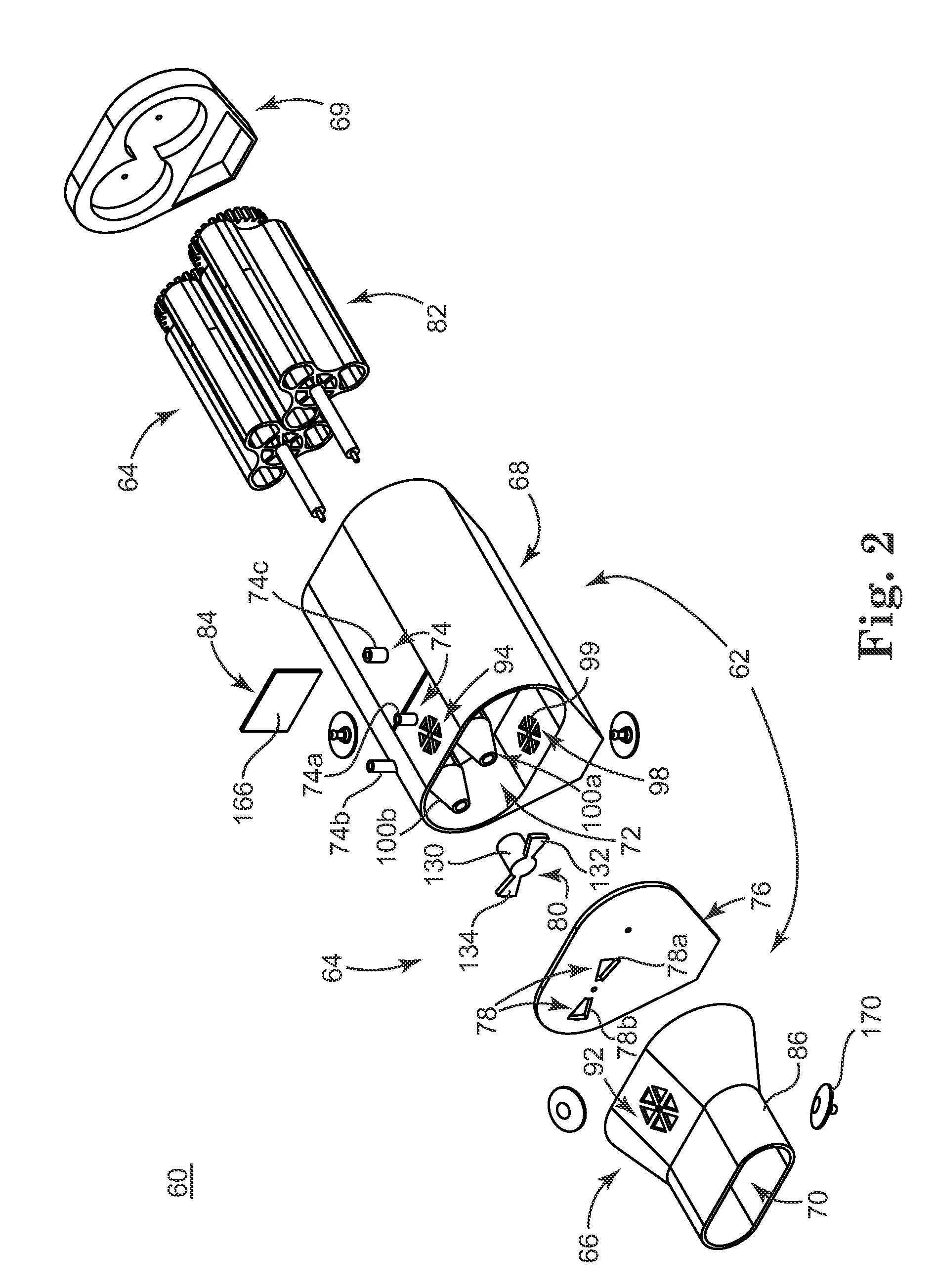Passive respiratory therapy device
a passive and respiratory therapy technology, applied in the field of respiratory therapy devices, can solve the problems of relatively sensitive flutter devices, relatively high cost, and inability to easily carry active respiratory therapy systems
- Summary
- Abstract
- Description
- Claims
- Application Information
AI Technical Summary
Benefits of technology
Problems solved by technology
Method used
Image
Examples
Embodiment Construction
[0047]In general terms, aspects of the present disclosure relate to respiratory therapy devices and related methods of use that are: 1) capable of operating in either of an active mode (e.g., CHFO) or a passive mode (e.g., oscillatory PEP); or 2) improved passive-only oscillatory PEP devices; or 3) improved active-only devices (CHFO and / or CPAP). As used throughout this specification, an “active” therapy device is in reference to a device that requires a separate source of positive pressure fluid to effectuate a designated respiratory therapy, whereas a “passive” therapy device is in reference to a device that delivers a designated respiratory therapy in and of itself (i.e., a separate source of positive pressure fluid is not necessary). Thus, an “active-only” therapy device is one that must be connected to a separate source of positive pressure fluid. Conversely, a “passive-only” therapy device is one that is not configured to receive pressurized fluid from a separate source. Given...
PUM
 Login to View More
Login to View More Abstract
Description
Claims
Application Information
 Login to View More
Login to View More - R&D
- Intellectual Property
- Life Sciences
- Materials
- Tech Scout
- Unparalleled Data Quality
- Higher Quality Content
- 60% Fewer Hallucinations
Browse by: Latest US Patents, China's latest patents, Technical Efficacy Thesaurus, Application Domain, Technology Topic, Popular Technical Reports.
© 2025 PatSnap. All rights reserved.Legal|Privacy policy|Modern Slavery Act Transparency Statement|Sitemap|About US| Contact US: help@patsnap.com



